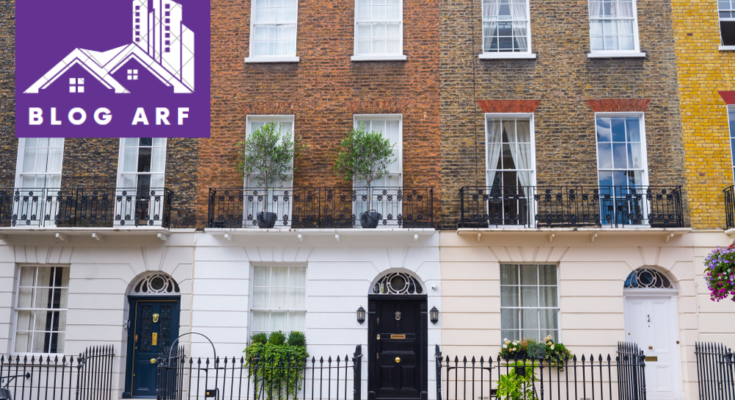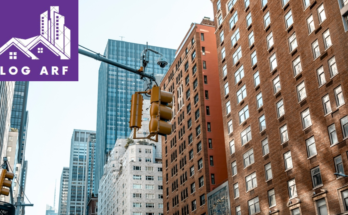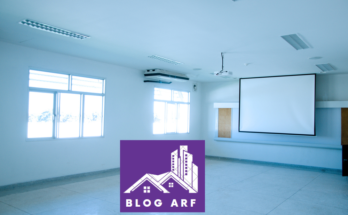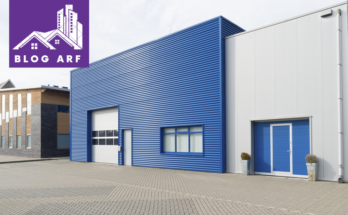Mayfair industrial building stands out as a symbol of technology and usefulness. This amazing piece of architecture is what progress and ecology in building business are all about.
The Mayfair industrial building is right in middle of city and is made of cutting-edge materials and has cutting-edge design.
The Mayfair industrial building shows how building techniques have changed over time with its sleek exterior and well-thought-out plan.
From the beginning goal has been to make a space that not only meets today’s needs but also thinks ahead to tomorrow’s.

As more people around world move toward eco-friendly habits Mayfair industrial building sets standard with its green building approvals and eco-friendly programs.
Every part of its building was carefully chosen to have least possible effect on environment while still making it as useful and efficient as possible.
The Mayfair industrial building also welcomes future of smart buildings by using cutting-edge technology to make things easier and more productive.
Everything is designed to make surroundings active and flexible, from automatic systems to solutions that use less energy.
Mayfair industrial building is a great example of how far building business has come. It raises bar for building greatness with its new ideas, environmentally friendly methods, and dedication to perfection.
How does the Mayfair industrial building contribute to sustainable building practices?
The Mayfair industrial building is a model of environmentally friendly building because it uses energy-saving systems and materials.
Solar screens use clean energy, and collecting rainwater cuts down on amount of water that is used. Its green certificates make sure that strict environmental rules are followed.
LED lighting uses less power, and insulation keeps temperatures stable, so you don’t have to use as much heat or air conditioning.
Recycling and reducing trash are given top priority by waste management techniques. By taking these steps Mayfair industrial building reduces its impact on environment and works to make it healthy..

Mayfair Industrial Building: Sustainable Design & Green Solutions
Sustainable Materials
- Use of eco-friendly materials such as recycled steel and sustainably sourced wood.
- Emphasis on materials with low environmental impact and high durability.
Energy Efficiency
- Installation of solar panels to harness renewable energy.
- Implementation of LED lighting throughout building to minimize electricity usage.
Water Conservation
- Utilization of rainwater harvesting systems to reduce reliance on municipal water sources.
- Installation of low-flow fixtures and water-efficient appliances to decrease water consumption.
Green Certifications
- Achievement of green building certifications such as LEED (Leadership in Energy and Environmental Design).
- Adherence to stringent environmental standards and guidelines.
Waste Management
- Implementation of comprehensive waste management practices to prioritize recycling and waste reduction.
- Promotion of composting and reuse initiatives to minimize landfill waste.
Thermal Insulation
- Integration of high-quality insulation materials to regulate indoor temperature.
- Reduction of heating and cooling demands, leading to lower energy consumption.
Natural Ventilation
- Design features that facilitate natural airflow and ventilation throughout building.
- Utilization of operable windows and ventilation systems to enhance indoor air quality.
Sustainable Landscaping
- Implementation of native landscaping and drought-resistant vegetation to reduce water usage.
- Creation of green spaces and rooftop gardens to mitigate urban heat island effect and promote biodiversity.

Carbon Footprint Reduction
- Adoption of measures to minimize carbon emissions associated with construction and operation.
- Investment in carbon offset programs and renewable energy credits to further reduce environmental impact.
Community Engagement
- Educational programs and outreach initiatives to raise awareness about sustainable building practices.
- Collaboration with local communities and stakeholders to promote environmental stewardship and sustainability.
Mayfair Industrial Building: Modern Design, Sustainability, and Community Impact
Modern Design
- Sleek and contemporary architectural design.
- Clean lines and minimalist aesthetic.
Efficient Layout
- Well-planned and functional floor layout.
- Optimization of space for maximum productivity.
Sustainable Features
- Integration of eco-friendly materials and technologies.
- Emphasis on energy efficiency and green building practices.
Advanced Technology
- Incorporation of smart building systems and automation.
- Utilization of cutting-edge technology for enhanced operations.
Green Certifications
- Achievement of certifications such as LEED or BREEAM.
- Compliance with rigorous environmental standards.
Accessibility
- Convenient location with easy access to transportation networks.
- Barrier-free design for inclusivity and accessibility.
Amenities
- On-site amenities such as parking, dining options, and recreational spaces.
- Facilities tailored to meet needs of tenants and visitors.
Safety Measures
- Implementation of robust safety protocols and systems.
- Compliance with building codes and regulations to ensure occupant safety.
Flexibility
- Versatile spaces adaptable to various industries and uses.
- Modular design allowing for customization and expansion.
Community Impact
- Contribution to local economy and job creation.
- Engagement with community through outreach programs and initiatives.

Advantages and Disadvantages of Mayfair industrial building
| Advantages | Disadvantages |
| Modern and sleek design | High initial construction costs |
| Efficient use of space | Limited customization options |
| Incorporation of sustainable features | Potential maintenance challenges |
| Access to advanced technology | Dependence on external amenities |
| Green certifications achieved | Possible disruptions due to technological failures |
| Convenient location with easy access | Noise pollution from surrounding industrial activities |
| On-site amenities for tenants | Limited natural lighting in interior spaces |
| Flexibility for various industries | Regulatory compliance complexities |
| Safety measures in place | Risk of market fluctuations affecting occupancy rates |
| Positive impact on local economy | Limited availability of parking spaces |
Bottom Lines
Finally, the Mayfair industrial building is a great example of how to build something current and environmentally friendly.
It is the future of industrial building because of its clean lines, smart plan, and use of environmentally friendly materials.
The Mayfair industrial building puts both usefulness and environmental duty first, as shown by its green certifications, cutting-edge technology, and high-end facilities.
Even though it might have some problems, like high building costs and problems with upkeep, the pros far outweigh cons.
In addition to being in a good spot and helping local economy Mayfair industrial building is a symbol of growth and new ideas, setting a new standard for industrial projects.
Click here for more information
FAQ’s
What is the location of the Mayfair industrial building?
The Mayfair industrial building is located in the heart of the city, offering easy access to transportation networks and urban amenities.
Who are the architects or developers behind the Mayfair industrial building?
The architects and developers behind the Mayfair industrial building are renowned for their expertise in modern and sustainable architecture, ensuring a high-quality and innovative design.
What are the key features of the Mayfair industrial building?
Key features of the Mayfair industrial building include its sleek and contemporary design, efficient layout, incorporation of sustainable materials and technologies, and advanced amenities tailored to the needs of tenants
Are there any unique design elements incorporated into the Mayfair industrial building?
Unique design elements integrated into the Mayfair industrial building include its use of eco-friendly materials, innovative facade treatments, and attention to detail in creating a modern and functional space.





